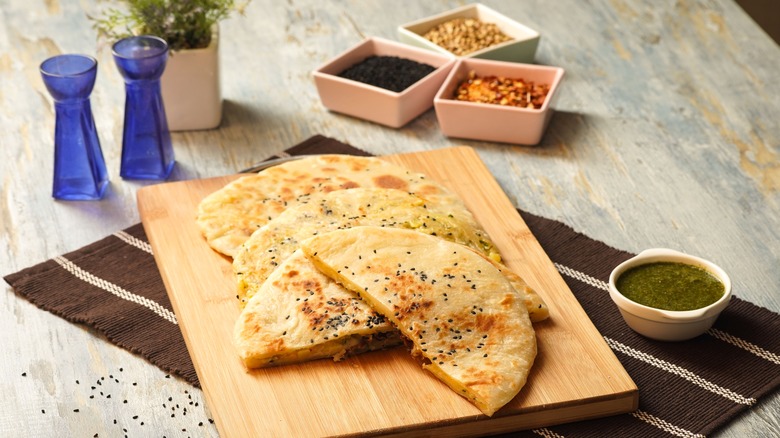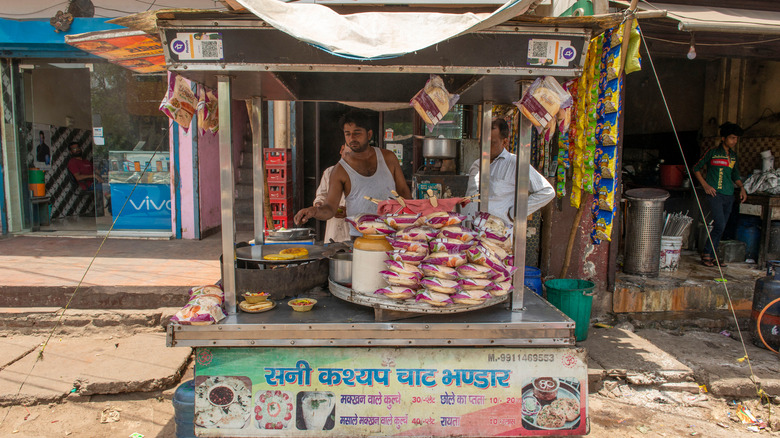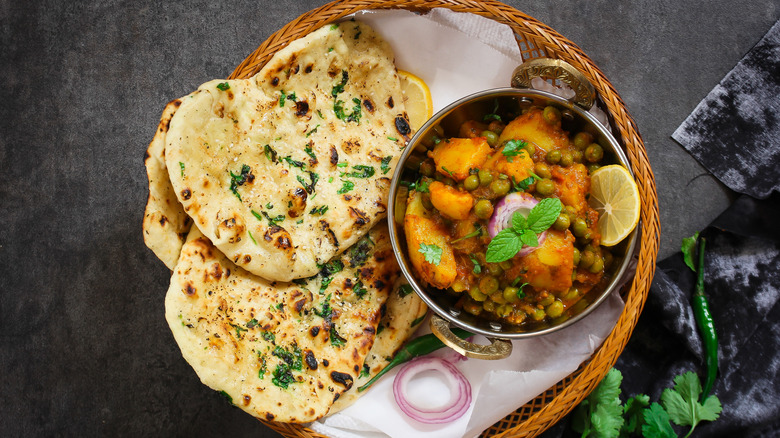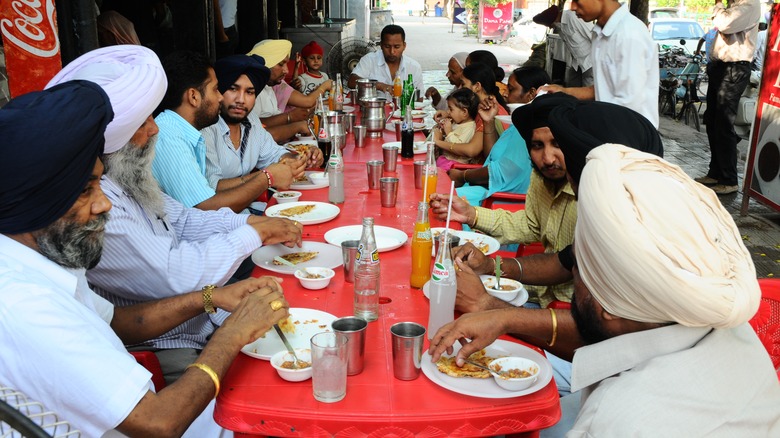Kulcha: The Naan-Adjacent Bread You Should Know About
Bread has played a significant role in nearly every global culture for thousands of years. Whether in the case of the French Revolution, a steep rise in bread prices helped spark a rebellion, or in Ancient Egypt, where poor workers were often paid in bread and beer portions, bread has helped shape and develop human history (via Grants Bakery).
India is one country known for its unique types of bread. While many countries across North America and Europe have bread in the form of loaves, India is known for its flatbreads. Naan, the most familiar example, is a leavened bread made with Indian white flour that is perfect for pairing with curries. However, there is a diverse bread selection in India, and kulcha is an underrated one.
Kulcha is similar to naan, but it is often made on a griddle and has a soft, chewy texture (via Taste Atlas). Kulcha has played a noteworthy role in Indian history and is easy to enjoy with your favorite Indian dish.
History of kulcha
In the 13th century, migration from Central Asia to Northwest India took place. These migrations brought with them pieces of their peoples' cultures, including their foods and cooking methods (via Condé Nast Traveller). This included bringing leavened bread and tandoors, cylindrical clay ovens with internal curves, and a wide-top opening, according to Kitchn. Prior to this, Punjabi people used griddles to cook their bread, like roti. This introduction eventually led to the creation of a Peshawari khameeri roti, a sourdough flatbread, says Condé Nast Traveler. It seems that kulcha was inspired by the khameeri roti. Later, a new version of kulcha was created by adding a filling of potatoes and other vegetables, birthing the famed Amritsari kulcha, named after the city it is native to, Amritsar, reports Times of India.
Today, kulcha shops can be found all over the city and are often served as popular street food. Kulcha has a constant demand with bakers often selling out by noon, notes Condé Nast Traveler.
Ingredients in kulcha
Today, kulcha is made from simple ingredients that mix to create a perfectly chewy, soft, and buttery texture. The main ingredient in kulcha is all-purpose flour, but it also contains baking powder, baking soda, water, sugar, salt, oil, and yogurt. Ghee is typically used for frying, while onion seeds or nigella seeds can be added for extra flavor (via Dassana's Veg Recipes).
Kulcha is leavened bread, but unlike naan, yeast is not added. Rather, the baking powder and baking soda are added to leaven it, per Dassana's Veg Recipes.
Amritsari kulcha is prepared similarly to kulcha, but with added ingredients for the filling. Fillings can vary based on preferences, but Hebbars Kitchen adds potatoes, green chili, red chili powder, garam masala powder, ginger, dry mango powder, carom seeds, coriander leaves, and salt. All these ingredients are mixed and mashed together, then tucked tightly inside the dough prior to cooking.
How to eat kulcha
There is no right or wrong way to enjoy kulcha. Kulcha is often served hot and buttery, so it can be eaten enjoyably alone as a quick snack or as part of a filling meal. However, there are dishes that kulcha pairs exceptionally well with. Chole, another Punjabi dish made of chickpeas cooked in a flavorful and spicy gravy (according to Indian Healthy Recipes), is a popular choice.
There are also other variations on the classic kulcha that have unique fillings or pairings of their own. For example, chana kulcha is a common dish that also includes chickpeas mixed with various seasonings, including cinnamon, ginger, and cumin (via NDTV Food). Paneer kulcha is also popular, which includes a kulcha stuffed with paneer, onions, chilies, ginger, and a blend of spices, says Sanjana Feasts.
Whatever variation you choose, kulcha may soon prove to be your new favorite bread.



